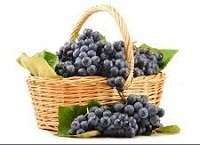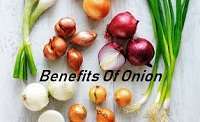The following page describes everything about pulses. It tells what is pulses meaning, and what do we call Pulses in Hindi. Some hidden facts also like the health benefits of pulses and much more. This page describes facts about Pulses. It tells Value of Pulses including Minerals and Vitamins in Pulses and describes what are the natural benefits and curative properties of Pulses with Health Benefits of Pulses.
Importance of Pulses
Following is the Importance of Pulses. It includes pulses color and some more information about pulses–
Pulses may be defined as the dried edible seeds of cultivated legumes. They belong to the family of peas, beans and lentils. The English word pulse is taken from the Latin puls, meaning pottage or thick pap. The pulses are a large family and various species are capable of surviving in very different climates and soils. Traces of pulse crops have been found from ancient times in archaeological sites of both the Old and New Worlds and they appear to have been among the earliest domesticated plants. These findings indicate an almost simultaneous arrival of cereals and pulses around 10,000 BC. Pulses are cultivated in all parts of the world, and they occupy an important place in the human diet. They, however, make a much more important contribution to the diet of all classes of society in the East than in the West. In India especially, people who are mostly vegetarian depend largely on cereals and pulses as their staple food, which serve as the main source of dietary protein and energy.
Value of Pulses
Pulses nutrition is another matter of knowledge. So here we are providing pulses nutritional value which actually tell about pulses nutrients and their benefits.
Pulses contain more protein than any other plant. They serve as a low-cost protein to meet the needs of the large section of the people. They have, therefore, been justifiably described as ‘the poor man’s meat’. Their low moisture content and hard testa or seed-coat permit storage over long periods. In addition to providing dry pulses. many of the-crops are grown for their green edible pods and unripe seeds. Nutritionally, immature fruits have distinctly different properties to those of the mature stuff, the protein content is lower but they are relatively richer vitamins and soluble carbohydrates. The leaves and shoots of some of the crops are used as pot-herbs. In general, pulses contain 20 to 28 per cent protein per 100 gin. With the exception of soybean which has as much as 47 per cent. Their carbohydrate content is about 60 per cent per 100 gm. except for soybean which has about 30 per cent. Pulses are also fairly good sources of thiamin and niacin and provide calcium, phosphorus and iron. On an average 100 gram of pulses contain energy 345 kcal, protein 24.5 gm., calcium 140 mg. phosphorus 300 mg., iron 8 mg., thiamin 0.5 mg., riboflavin 0.3 mg. and niacin 2 mg.
Natural Benefits and Curative Properties of Pulses
Pulses has a lot of curative properties and natural benefits. Read this passage to find benefits of pulses–
The nutritive properties of pulses resemble in many respects those of the whole cereal grains, but there are important differences. First, the pulse protein is low in sulphur-containing amino acids but rich in lysine in which many bowls of cereal are deficient. A combination of pulses and cereal proteins may, therefore, have a nutritive value as good as animal proteins. Secondly, pulses as a class are good sources of the B group of vitamins except for riboflavin. More importantly, the greater part of these vitamins present in the harvested seeds is actually consumed. There are no losses comparable with those that may arise in the milling and cooking of cereals. Pulses are, therefore, an excellent preventive against beriberi. Thirdly, although pulses, like cereal grains, are devoid of Vitamin C, a large amount of ascorbic acid are formed on germination. Sprouted pulses are, therefore, an important food which will protect against scurvy. Dietitians in Asian and African hospitals make beneficial use of sprouted pulses for their menus, especially when fresh vegetables and fruits are scarce or too expensive. In health, the digestion of pulses and the absorption of their principal nutrients n practically complete and nearly as effective as is the assimilation of cereals. Their digestion, may, however, be incomplete in gastrointestinal disorders. Only small townie of well-cooked pulses should, therefore, be included in the diets of patients with stomach disorders.
Uses of Pulses
Pukes air used as a common foodstuff in various forms. Pulses. deblocked, detain( died and whole seed, are used as dhal and taken with chappatis and cooked rice, Whole seeds take longer time to cook than the dehusked and decorticated ones which are relatively better digestible. Pulses are also commonly used in the form of flour such as that of Bengal gram, green gram, black gram, known as ‘besan’. It is used for mixing with cereal flour in various proportions for chappatis and other preparations. The practice of utilizing germinated seed or sprouting or young seedlings of pulses as a fresh vegetable is widespread in the Orient. The storage of dried seed and their sprouting as required enables a continuous supply of fresh vegetable material to be produced. There is an amazing increase in nutrients in sprouted pulses when compared to their dried embryo. In the process of sprouting, the vitamins, minerals and protein increase substantially with a corresponding decrease in calories and carbohydrate content. Sprouting of the pulses not only improves nutritive value but also digestibility. During sprouting, starch is broken down to dextrin and maltose, and proteins are broken down to polypeptides, peptides and amino acids. Some of the bound iron is converted to a more readily assimilable form. Phosphorus is liberated from phytate. The ascorbic acid or vitamin C content rises from negligible levels in the seed to 12 mg. per 100 gram* after 48 hours of germination. Riboflavin and niacin contents increase significantly. These changes are brought about by enzymes which become active during germination.



